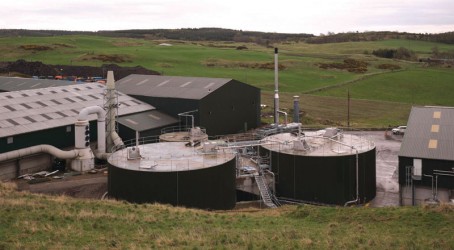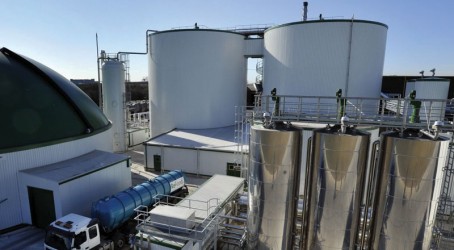When it came to power, the coalition claimed it would be the greenest government ever. It made a pledge to work towards a zero-waste economy and to increase the generation of energy from waste using anaerobic digestion. Last year, the Department for Environment, Food and Rural Affairs (Defra) set out an anaerobic digestion strategy and action plan to illustrate the government’s vision for the sector and provide a detailed plan of how to achieve it.
But now, 12 months on, the government has proposed cuts to the number of anaerobic developments that will qualify for certain subsidies. Those within the industry say that proposed changes could have damaging consequences for the sector and undermine the coalition’s ambitions.
For a zero-waste economy, anaerobic digestion technology fits the bill. It reduces the amount of waste that goes to landfill by taking waste organic matter from homes, farms and industry and turning it into renewable heat and energy. The gas that is produced as a by-product of the process can be purified and either injected into the gas grid or used to fuel vehicles. Even the left-over sludge, known as digestate, can be put to further use as fertiliser.
The UK has 78 anaerobic digesters that operate outside the water sector. Potentially, the industry could supply 3-5TWh of electricity by 2020, says Defra.
Most renewable energy projects are entitled to some form of government subsidy. Developers that wish to build an anaerobic digestion plant can receive subsidies from the government. They have two options: the feed-in-tariff (FIT), which supports plants up to 5MW, and the renewables obligation. FIT subsidies pay a certain number of pence per kilowatt-hour of electricity produced, depending on the size of the installation. The prices are fixed at the time the plant is commissioned, and are guaranteed for 20 years.
Alternatively, the renewables obligation offers suppliers renewable energy certificates (ROCs). These can be sold to companies that purchase energy, to help them meet government targets for renewable power. The number of ROCs a generating company receives depends on how much energy it generates.
The renewables obligation is designed to support larger installations than the FIT, but it has been available for installations below 5MW. However, from April 2013 this is set to change. The Department of Energy and Climate Change plans to make the scheme open only to new anaerobic digesters above 5MW.
The proposed changes provoked an immediate backlash from the Renewable Energy Association. Head of biogas, David Collins, says the decision has “all but dismantled” the coalition agreement’s ambition on anaerobic digestion.
In reality, there are very few anaerobic digestion plants above 5MW because of the cost and carbon footprint of transporting feedstocks to a plant. Matt Hindle, policy manager at the Anaerobic Digestion and Biogas Association, says: “We are not like other renewable energies, where you put in the generating station and let it go. You’ve got to constantly bring material into the plant, so transport and distance of feedstock becomes really important.”
This transport factor means the proposed changes would effectively remove anaerobic digestion from the renewables obligation for the vast majority of operators, he says. Although there is still another method of funding support, the FIT, not all developments are eligible for it. Developments that use older generating equipment, and those that had public funding grants for construction, are excluded from the FIT scheme under European Union state aid rules.
A minority of plants have been built with public finances as grants have dried up over recent years, says Hindle. But some plants built with this assistance do still exist.
He also has issues with the speed of the change, claiming that the government has sprung the changes on the industry “out of the blue”. Typically, plants are at least a couple of years in development, so those currently in build will have to rush to complete before the changes take effect in April next year. Alternatively, developers will
be returning to their business plans and changing their projects to fit the new scheme.
“It will cause problems to those businesses, which then causes a wider ripple effect in terms of confidence in government policy if they are willing to make this sort of change at that sort of notice,” says Hindle. “We don’t think that is a good way to make policy.”
The apparent justification for the changes is to remove the overlap between FIT and the renewables obligation, he says. But although two forms of subsidy are currently available for developments under 5MW, any given project can only claim one of them. “There isn’t a double counting element.”
In addition, the value of subsidies in the two schemes is linked. “The lowest rate of the FIT is linked to the amount you can claim for the renewables obligation. So there isn’t a problem with projects effectively gaming to get the higher tariff,” he adds.
Lucy Hopwood, head of biomass and biogas at bioeconomy consultancy NNFC, says that the renewables obligation has proven popular in the sector – almost half of all digesters claim ROCs. To her, the proposal to limit the renewables obligation to only those projects above 5MW came as a surprise. The risks are now “extremely high” for companies currently installing anaerobic digesters, she says. “Unless they get their plant commissioned before 1 April 2013, they may no longer be eligible for ROCs.


“While the announcement may mean medium-scale, on-site developers could see their business marginalised, there may be greater opportunities to work with larger companies looking to source feedstock from food manufacturers for larger centralised plants,” she says. “Facilities linked to food manufacturers are one of the few industries that can make larger-scale combined heat and power viable, having a consistent feedstock and demand for heat and power on-site.”
Organic waste company TEG is hurrying along the development process for an anaerobic digestion plant, so it will remain in the running to receive support under the renewables obligation. The planned 50,000-tonne capacity plant in Dagenham, Essex, will be co-located with an in-vessel composting plant and will generate 2MW of electricity.
The company already has one plant in Perth, Scotland, that is supported by the scheme. It has a capacity of 16,000 tonnes, generates 800kW of electricity and is co-located with an in-vessel composting plant.
TEG’s commercial director, Mike Ore, says that the removal of renewables obligation subsidies for plants less than 5MW will affect future developments of that scale. He adds that getting funding for anaerobic digestion projects remains “incredibly difficult”.
“We are right on the edge of what is fundable,” he says. Each of TEG’s projects is funded individually and depends on the subsidies, gate fees and electricity prices. Any changes to any of those factors affects the ability to attract funding for a project. “We need that subsidy to make it work,” he adds.
But Philip Simpson, commercial director of PDM, a recycling and process services company, says he remains “neutral” about the changes. PDM has previously chosen the FIT subsidies for its anaerobic digestion plants rather than those available from the renewables obligation, and plans to do so again.
In September last year, the company opened an anaerobic digestion plant in Doncaster, South Yorkshire, which is subsidised by FIT. The plant processes around 45,000 tonnes of food waste a year and generates more than 2.8MWh of power. The power is used to run the Doncaster site and supply the national grid. The waste is collected from local homes and restaurants, and from one of the company’s pet-food production plants.
PDM is building two new plants, one in Widnes, Cheshire, and one in east London, in a £40 million investment, and Simpson says that both will fall under the FIT scheme.
“We would never develop an anaerobic digestion plant over 5MW,” he says. “The amount of raw material it would need means the catchment area would be too big. We always try and take local material within a 50-mile radius. If you go beyond that, the economics become very poor, and there is the environmental side as well.”
Simpson acknowledges that some developers may have concerns about the changes. “By limiting yourself to the FIT rather than the renewables obligation, you are taking away flexibility from the project,” he says. “But I think the downsides to the ROCs outweigh the positives. At least with the FIT you have certainty for 20 years.”
He says that PDM did not view ROCs as an option to support the Doncaster plant, because the prices of ROCs are not guaranteed and are subject to the value in the marketplace. The FIT scheme is easier to administer and developers get a guaranteed tariff, he adds. “Anyone developing the projects can look forward 20 years and know there is a floor on the price they will get for their power. There aren’t many jobs where you can have a 20-year certainty,” he says.
The level of support that is available to anaerobic digestion plants that opt for support under FITs will be changing from December this year. Plants above 500kW will receive just under
9p/kWh of electricity generated, down from just under 10 pence previously.
Simpson says that there is unlikely to be any major impact of the reduction on the two new plants that the company has in planning. “We have looked at the impact on the financial model, and it’s not massive. It’s certainly not enough to kill the project.”
The Widnes plant looks set to be up and running by the end of 2013, with London to follow in early 2014.
PDM is also looking to open seven new plants in mainland Europe: five in Germany and two in France. The company currently has five plants in Germany and one in France. Simpson says that according to his European colleagues, support for anaerobic digestion power in the UK is more attractive than in Germany and France. “The unit price is slightly higher in the UK than they receive.”
But in Germany, for example, companies gain at the other end of the equation as there are higher gate fees on food waste. This is because landfill from food waste is severely restricted in Germany. “On the whole project, they are not as reliant on the power price as we would be,” says Simpson.
Meanwhile, in the UK, a government consultation on the proposal to close the renewables obligation to new digesters below 5MW will be launched soon. The Renewable Energy Assocation’s David Collins says he will “fight hard to make the case for anaerobic digestion”.

How anaerobic digestion works
Anaerobic digestion is not a new technology. It has been used in the UK for more than 100 years to treat sewage sludge. During the process, organic material is put into sealed tanks where, in the absence of oxygen, micro-organisms break it down. The feedstock can be farm slurry or manure, crops grown specifically for the process, or left-over food from homes and restaurants.
The process produces biogas and digestate. The biogas – a mixture of methane, carbon dioxide and traces of other gases – can be burnt to produce heat and power, which can be used locally or supplied to the national grid, or processed to create biomethane. Biomethane can be used as vehicle fuel, or injected into the gas grid and used in the same ways as natural gas.
Digestate contains valuable nutrients, including potassium and nitrogen, and can be used as a fertiliser or soil conditioner.